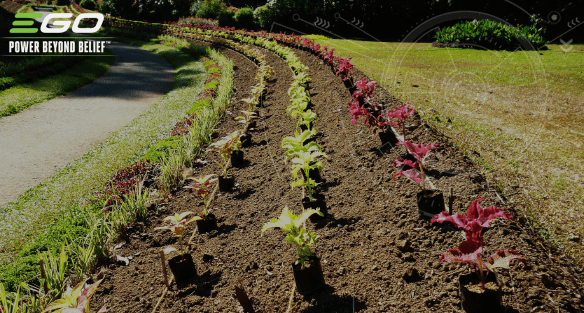While we wait for the warmth and light that signal spring has arrived, we can get started on getting the flower beds ready for the growing season.
Cultivation is the process of loosening the soil and uprooting weeds. It also aerates the soil. There are a couple of different methods of cultivating the ground:
- By hand - the traditional way, using a spade, shovel, fork or hand cultivator.
- Using a battery operated garden cultivator (we don’t recommend a petrol model because of the fumes, emissions, noise and vibration).
Preparing your ground for planting
Your objective is to turn the top few centimetres of soil over. If your beds have been worked previously or don’t contain much clay, the soil will be looser.
Equipment
- Spade and/or fork; or
- Multi-tool lawn edger and cultivator attachments
We advise you to wear protective gloves and eyewear when using the multi-tool attachments. They are designed for optimal safety, but accidents can happen.
1. By hand
- Neaten up your lawn edges with the edge of the spade if they look a bit ragged. You can bury any loose bits of turf deep down into the ground (for nutrients) or compost them.
- Dig a few centimetres down, turn the sod over, and break the mass up into a finer, even texture with the edge of the spade or fork.
- Repeat for the entire area of the flowerbed, removing stones and roots as you go.
- Spread generous helping of rich compost or good manure. You can dig it in, or take a no-dig approach and water it in, or wait until it rains.
- Your flower bed is now ready for planting seeds. Don’t plant plugs or seedlings until the frosts are well and truly over.
2. With a cordless hand cultivator
- Neaten up your lawn edges with the electric lawn edger if they look a bit ragged. As above, bury unwanted bits for nutrients or compost them.
- Walking forwards with the battery-operated garden cultivator, turn the top layer of soil over until you’ve cultivated the entire flowerbed, removing stones and roots as you go.
- The EGO hand cultivator will move backwards, left, right, and in a circular motion, so you can adapt your method to the size, shape and soil conditions.
- Spread generous helping of rich compost or good manure. You can dig it in using the hand cultivator or take a no-dig approach and water it in, or wait until it rains.
- Your flower bed is now ready for planting seeds. Don’t plant plugs or seedlings until the frosts are well and truly over.
Read more tips for using a garden cultivator or head over to the cultivator page to see more about this and other versatile multi-tool attachments.
